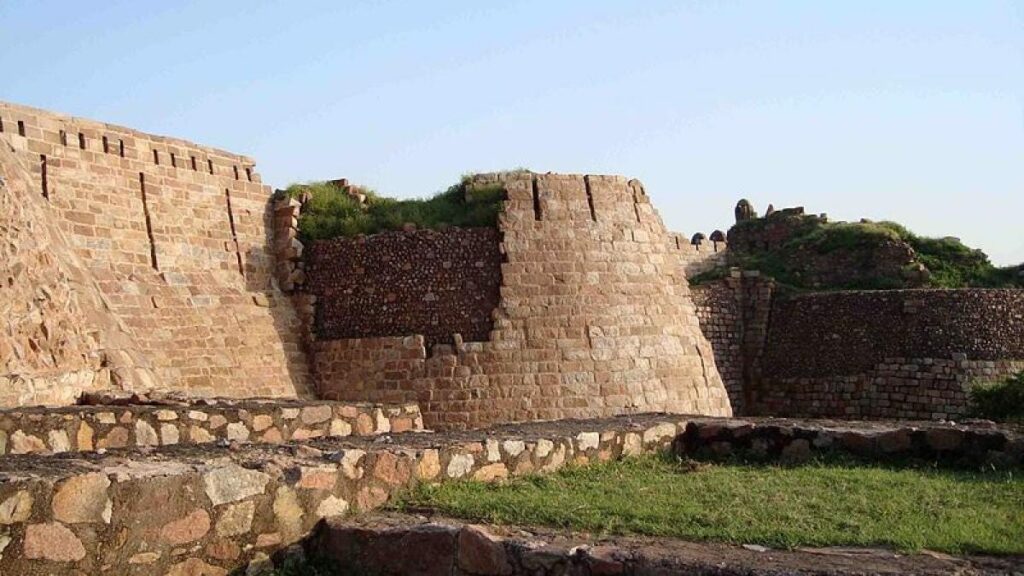Tughlaqabad Fort: The Timeless Citadel of Delhi’s Turbulent Past

Introduction: Nestled amidst the arid plains of Delhi, Tughlaqabad Fort stands as a silent witness to the tumultuous history of India’s capital city. With its imposing walls, massive bastions, and sprawling ruins, this historic fortress bears the scars of conquests, betrayals, and the rise and fall of empires. Built in the 14th century by the enigmatic Sultan Ghiyas-ud-din Tughlaq, the fort remains a testament to the architectural grandeur and political ambitions of the Tughlaq dynasty. In this extensive article, we will embark on a journey through time to explore the history, architecture, significance, and cultural impact of Tughlaqabad Fort, unraveling the tales and treasures that lie within its weather-beaten walls.
History: The history of Tughlaqabad Fort is intertwined with the rise of the Tughlaq dynasty in the 14th century. Commissioned by Sultan Ghiyas-ud-din Tughlaq, the fort was constructed between 1321 and 1325 AD as the new capital of the Delhi Sultanate, intended to showcase the might and power of the Tughlaq rulers.
However, the grand vision of Sultan Ghiyas-ud-din was short-lived, as the fort’s construction was marred by controversies, including forced labor, exorbitant taxes, and widespread unrest among the populace. Legend has it that the fort was cursed by Sufi saint Nizamuddin Auliya, who prophesied its downfall due to the cruelty and hubris of its builder.
Despite its turbulent beginnings, Tughlaqabad Fort played a pivotal role in shaping the history of Delhi and the surrounding region. It served as a strategic stronghold, a symbol of Tughlaq power, and a bastion of defense against Mongol invasions and rival powers.
Architecture: Tughlaqabad Fort is renowned for its impressive architecture, characterized by its massive walls, towering bastions, and strategic layout. Built primarily of locally quarried stone and surrounded by a moat, the fort’s imposing walls rise to a height of over 15 meters and enclose an area of approximately 6.5 kilometers.
One of the most striking features of Tughlaqabad Fort is its massive entrance, known as the Tughlaqabad Darwaza, or Tughlaqabad Gate, which is flanked by massive bastions and adorned with intricate carvings and decorative elements. Beyond the gate lies a series of courtyards, palaces, and mosques, each showcasing the rich craftsmanship and architectural prowess of the Tughlaq artisans.
Within the fort, visitors will find a wealth of architectural marvels, including the tomb of Sultan Ghiyas-ud-din Tughlaq, the massive reservoir known as the Tughlaqabad Baoli, and the remnants of various residential and administrative structures. Despite centuries of neglect and decay, these remnants offer a glimpse into the grandeur and splendor of Delhi’s medieval past.
Significance: Tughlaqabad Fort holds immense significance as a symbol of Delhi’s rich history, architectural heritage, and cultural legacy. It has been recognized as a protected monument by the Archaeological Survey of India, preserving its legacy for future generations.
Beyond its historical and architectural significance, Tughlaqabad Fort is also deeply intertwined with the cultural identity of Delhi and the surrounding region. It has inspired poets, writers, and artists for centuries, serving as a muse for tales of conquest, betrayal, and redemption. The fort’s enduring legacy continues to resonate with people around the world, offering a glimpse into the turbulent history of India’s capital city.
Visitors to Tughlaqabad Fort can explore its rugged ruins, climb its towering bastions, and immerse themselves in its rich history and cultural heritage. They can witness the grandeur of Tughlaq architecture, marvel at the strategic ingenuity of its layout, and experience the palpable sense of history that permeates its ancient walls.
Conclusion: In conclusion, Tughlaqabad Fort stands as a monumental testament to the grandeur, ambition, and tumultuous history of Delhi. From its legendary origins to its enduring legacy, the fort continues to inspire awe and admiration in all who visit. As a symbol of Delhi’s rich cultural heritage and a protected monument, Tughlaqabad Fort holds a special place in the hearts of millions of people around the world. Whether exploring its rugged ruins or gazing out at the sprawling expanse of the city from its bastions, visitors to Tughlaqabad Fort are transported back in time to an era of conquest, glory, and intrigue. Truly, Tughlaqabad Fort is not just a fortress; it is a living monument to the enduring spirit and cultural legacy of Delhi’s medieval past.




